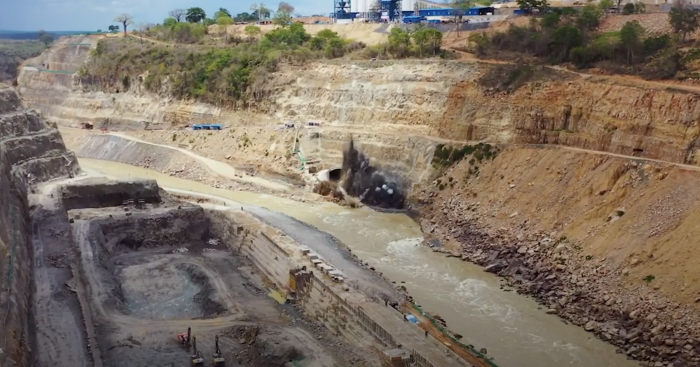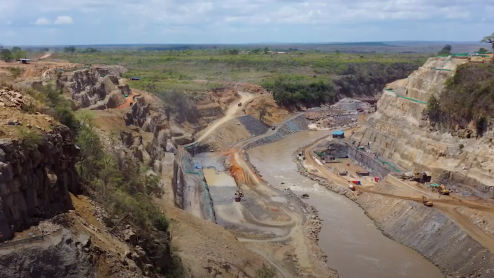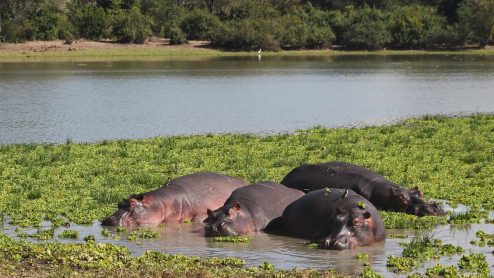World Heritage Committee meeting a chance to strengthen conservation commitments
The World Heritage Committee’s first in-person meeting since 2019 is prime opportunity for it to strengthen its commitments to protect some of the most precious environments on the planet.
The Extended 45th Session of the Committee opened yesterday (10 September) in Riyadh, Saudi Arabia, and will run until 25 September 2023.
The COVID-19 pandemic caused the 44th Session to be conducted online in 2021. The 45th Session was scheduled for 2022 but was delayed due to the invasion of Ukraine by Russia, the proposed host of the meeting.
This Session now presents a critical opportunity for the Committee and State Parties to address key issues of World Heritage conservation, management, interpretation and presentation.

Elephants in the Selous Game Reserve, Tanzania (c) EIA
EIA Wildlife campaigners will be closely following matters related to World Heritage and Sustainable Development (focusing on the ‘no-go commitment’), the State of Conservation of World Heritage properties and, last but definitely not least, the List of World Heritage Sites in Danger.
We have produced a briefing with key recommendations for the Committee and Parties to consider when making decisions.
In particular, we’re calling for a greater commitment by the financial and corporate sectors to adopt and implement the UNESCO ‘no-go’ commitment – effectively treating World Heritage Sites as strictly off-limits to destructive and invasive large-scale developments and infrastructure projects such as oil and gas exploration, mining and hydropower dams.
These sectors need to robustly and proactively strengthen their lending criteria, safeguard policies and impact assessment processes to avoid negative impacts on World Heritage Sites and we urge State Parties to strengthen their engagement with their domestic financial and corporate sectors to secure an increase in signatories to the no-go commitment.
Our briefing focuses largely on several African Natural World Heritage Sites which are facing significant infrastructure and development challenges.
The Selous Game Reserve World Heritage Site, in Tanzania, is proposed for retainment on the List of World Heritage in Danger, which seems a likely outcome. After repeatedly flagging the dangers posed by the Julius Nyerere hydropower plant in the Selous, EIA called for the World Heritage Committee to support the proposal at the 44th Session for the deletion of the property from the List of World Heritage.
Contrary to the recommendation of the IUCN Advisory Body, the World Heritage Centre and EIA, the Committee instead elected to retain the Selous on the List of World Heritage Sites in Danger, missing a crucial opportunity to hold Tanzania to account for its failings to uphold its obligations under the World Heritage Convention.
Tanzania should urgently develop and implement an updated Desired State of Conservation for the Removal from the List in Danger which includes a set of robust, timebound and costed corrective actions specifically addressing the significant long-term damage caused by the hydropower plant.
 The danger posed by the oil and gas exploration in the wider Kavango river basin in Namibia and on the iconic Okavango Delta World Heritage Site in Botswana still remains. We believe Namibia, Angola and Botswana – which are collectively responsible for managing the Kavango Basin – should commit to a permanent moratorium against all extractive industries in the Kavango.
The danger posed by the oil and gas exploration in the wider Kavango river basin in Namibia and on the iconic Okavango Delta World Heritage Site in Botswana still remains. We believe Namibia, Angola and Botswana – which are collectively responsible for managing the Kavango Basin – should commit to a permanent moratorium against all extractive industries in the Kavango.
Further, Mana Pools, Sapi and Chewore Safari Areas World Heritage Site in Zimbabwe is potentially at risk from a copper mine across the Zambezi River in Zambia and we urge the country to recall its duty to not take any deliberate measures which might damage directly or indirectly another country’s heritage.
Although EIA will not be attending the Riyadh meeting in person, we will be closely following proceedings and providing relevant updates through our social media channels as they occur.




